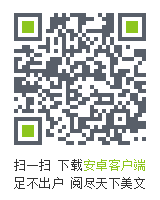Bitcoin and other so called crypt currencies have been all over the news lately. Apparently, the idea of money that's not tied to a specific bank — or a specific country — is appealing to many. But it's worth remembering that the banking system that we now all live with is just that: A modern invention. Not so long ago, money was almost always created and used locally, and bartering was common. (In fact, it still is common among many online local networks, like the Buy Nothing Project.).
比特币和其他所谓的加密货币最近充斥着新闻。显然,不与特定银行或特定国家挂钩的货币理念吸引了许多人。但值得记住的是,我们现在生活的银行系统只是一个现代发明。不算太久之前,钱几乎只是在当地创造和使用,以物易物很常见。(事实上,这在许多在线本地网络中仍然很常见,比如“不购物”项目)。
In the past, money's makeup varied from place to place, depending on what was considered valuable there. So while some of the world's first coins were made from a naturally occurring hybrid of gold and silver called electrum, objects other than coins have served as currency, including beads, ivory, livestock, and cowrie shells. In West Africa, bracelets of bronze or copper were used as cash, especially if the transaction was associated with the slave trade there. Throughout the colonial period, tobacco was used in lieu of coins or paper bills in Virginia, Maryland and North Carolina, even though it was used elsewhere in the colonies and extensively throughout Europe and the U.K.
在过去,钱的构成因地而异,这取决于那里的价值。因此,虽然世界上最早的一些硬币是由一种称为金银合金的天然金银混合体制成,但硬币以外的其他物品也被用作货币,包括珠子、象牙、牲畜和贝壳。在西非,青铜或紫铜手镯被用作现金,特别是当交易与那里的奴隶贸易有关时。在整个殖民时期,在弗吉尼亚州、马里兰州和北卡罗来纳州,烟草被用来代替硬币或纸币,尽管在殖民地的其他地方以及整个欧洲和英国都广泛使用烟草。
Today, on an island in the Pacific, a specific type of shell still serves as currency — and some people there are even hoarding it, just like Bitcoin moguls, convinced that one day, it will make them wealthy beyond imagination. On Malaita, the most- populated island that’s part of the Solomon Islands, shells are accepted at most places in “How much tuna you can get for your shells depends on their color and shape,” Mary Bruno, a shop owner from the small town of Auki, on Malaita, told Vice. “One strip of darker shells might get you about two cans of smaller tuna, but the red ones are worth more, For the red ones, one strip might get enough tuna to feed a big family for a long time.
今天,在太平洋的一个岛屿上,一种特定类型的贝壳仍然充当着货币——那里的一些人甚至像比特币大亨一样囤积贝壳,相信有一天,贝壳会让他们变得超乎想象的富有。马莱塔岛是所罗门群岛的一部分,是人口最多的岛屿,大多数地方都接受贝壳。马莱塔小镇奥基的店主玛丽·布鲁诺告诉Vice,“你的贝壳能买多少金枪鱼取决于它们的颜色和形状。一块深色的贝壳可能会给你带来两罐更小的金枪鱼,但红色的贝壳价值更高。一块红色的贝壳可能会让一个大家庭吃上很长时间的金枪鱼”。
Just like a mint that creates coins, there' s only one place on the island where the shells, which are polished and strung together to form 3-foot-long ropes, are made. (You can see how that works in the video above.) The strips of red, white, and black shells all come from Langa Langa Lagoon, where artificial islands were long-ago built by locals to escape from the island-dwelling cannibals. Once marooned out on their islands, locals needed a currency to use among themselves, and so the shell currency was born.
就像制造硬币的造币厂一样,岛上只有一个地方制造贝壳,贝壳经过打磨后串在一起形成3英尺长的绳子(你可以在上面的视频中看到这是如何工作的)。红色、白色和黑色的贝壳条都来自兰加-兰加泻湖,很久以前,当地人为了逃离岛上的食人族而建造了人工岛。一旦被放逐到他们的岛屿上,当地人就需要一种货币供他们自己使用,于是贝壳货币就诞生了。
Using shells for money was common throughout the Pacific islands as late as the early 1900s, but Malaita is unique in that they are still used today. And just like crypto currencies, there are those who think the islanders are smart to invest in this type of money, which is reported to have risen in value over the last three decades. It might seem strange to hoard a bunch of processed, strung-together shells, but what is a pile of dollars? Just a specially printed piece of paper and hemp that we've assigned value to — and probably less durable over time than those shells.
早在20世纪初,使用贝壳赚钱在整个太平洋岛屿都很常见,但马莱塔岛的独特之处在于,它们至今仍在使用。就像加密货币一样,也有人认为岛民投资这类货币是明智的,据报道,这类货币在过去三十年中价值有所上升。囤积一堆加工好的、串在一起的贝壳似乎很奇怪,但一堆美元是什么?只是一张我们赋予了价值的特殊印刷的纸和纤维——随着时间的推移,可能不如那些贝壳更耐用。








网友评论